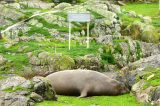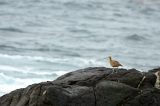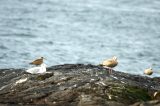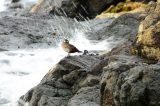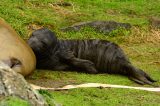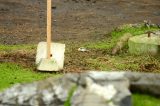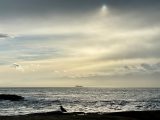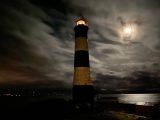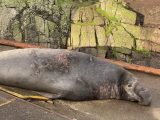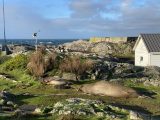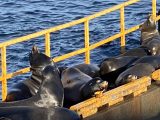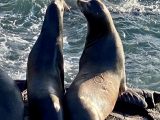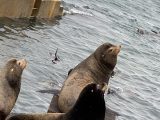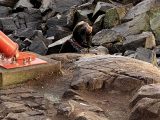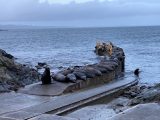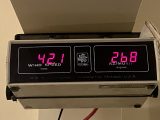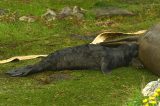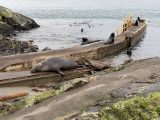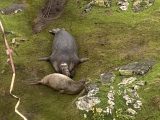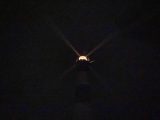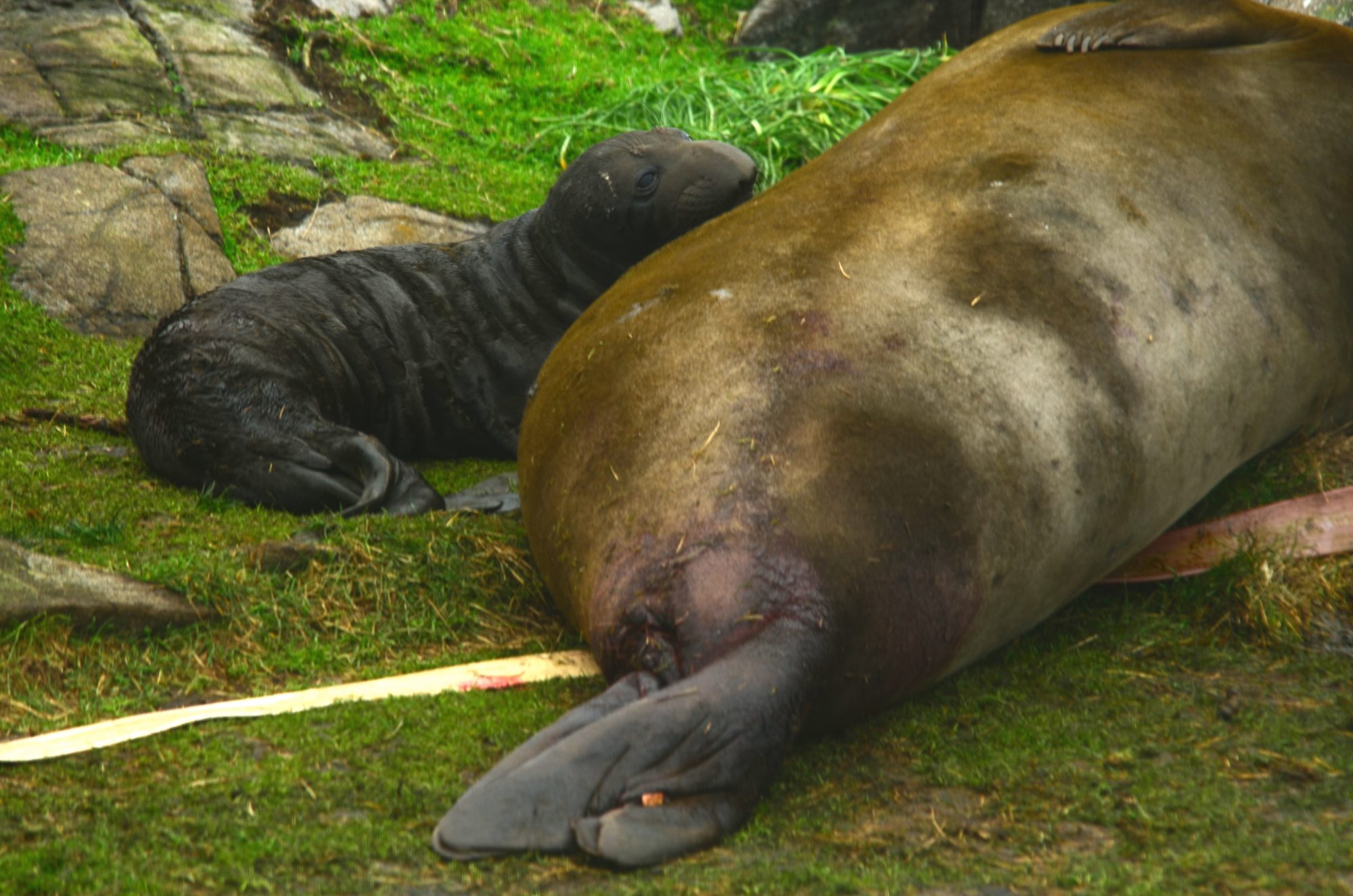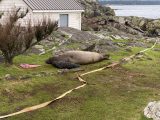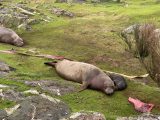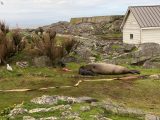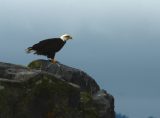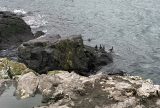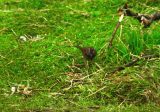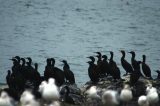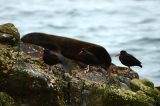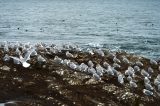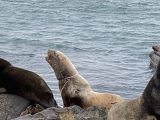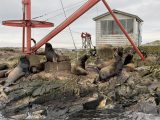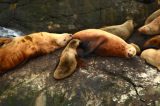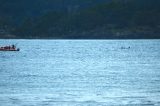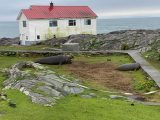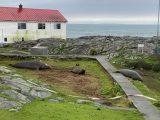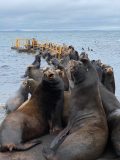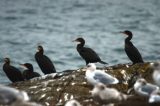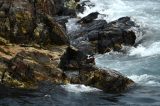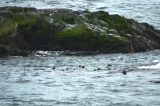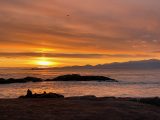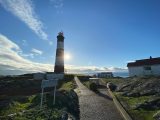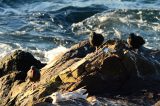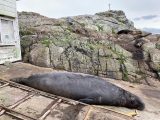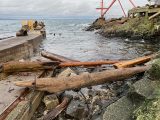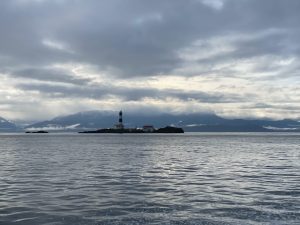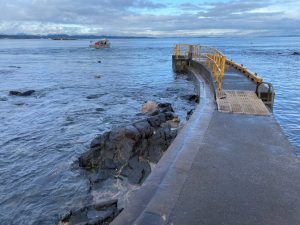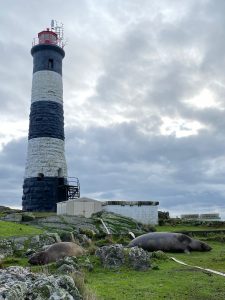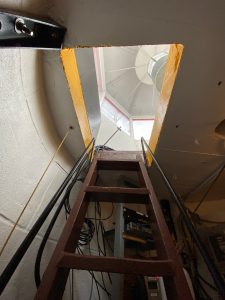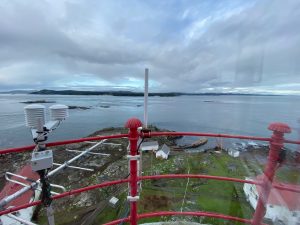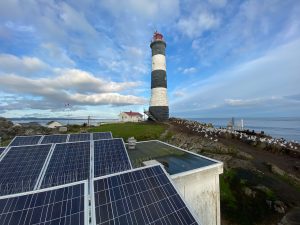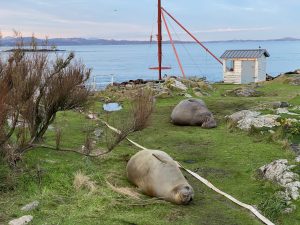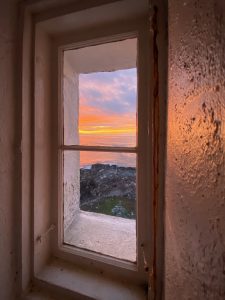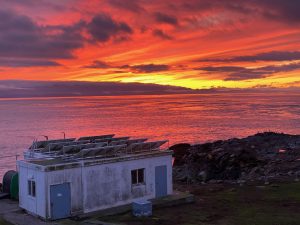Wind: 5-21 knots N-NE
Sea State: up to 3 m waves
Visibility: 10 NM
Sky: overcast with rain
Temperature:5-11 C
Atmospheric CO2: 412.64 ppm (recorded by NOAA at Mauna Loa Observatory, Hawaii)
The weekly census was done today, because the rain yesterday created poor visibility. This morning, it was overcast but not raining, so there was a good birds-eye view from the top of the lighthouse. Some species that were not last week are a whimbrel, snow bunting and another female elephant seal. The new seal looks pregnant, so there might be another pup very soon. She has moved into a spot on the grass between the desalinator building and the flagpole. That’s a great place for me to watch from the house, which is just 20m away. Last year, the three pups were born between January 4 and January 20.
I heard back from a sea lion researcher about the branded sea lions that were seen on Race Rocks a two days ago. Bryan, from the Oregon Department of Fish and Wildlife, let me know about some of the places where the sea lions have been:
California X282: branded at Astoria (Oregon) on Feb 25, 2016 and resighted in Oregon and at San Miguel Island, CA in 2016-2017.
California X392: branded at Astoria on March 8, 2016 and resighted in Oregon and at San Miguel Island in 2016.
California X501: branded at Astoria on May 24, 2016 and resighted in Oregon fall of 2016.
California 1-59: braded at Bonneville Dam (near Portland, Oregon on the Columbia River)on May 19, 2015 and resighted at Astoria and Bonneville through 2017.
The only boats seen in the ecological reserve were two eco tour boats and two kayakers.
January 3 census results:
6 elephant seals (2 females, 3 males, 1 pup)
223 steller sea lions
291 california sea lions
30 harbour seals
21 bald eagles (13 adults and 8 juveniles)
1 raven
103 brandt’s cormorants
16 double-crested cormorants
17 pelagic cormorants
264 gulls (most of them appeared to be thayer’s gulls)
36 black oystercatchers
18 harlequin ducks
1 whimbrel
15 surfbirds
28 black turnstones
1 snow bunting
- The newly arrived adult female elephant seal
- Whimbrel
- Whimbrel
- Whimbrel and three gulls
- Harlequin ducks
- Nursing elephant seal pup
- Nursing elephant seal pup
- Snow bunting
- A silhouette of a raven with the backdrop of the Olympic Mountains and a bulk carrier ship.
- A view of the lighthouse from the porch of the ecoguardian’s house on a cloudy, moonlit night.

